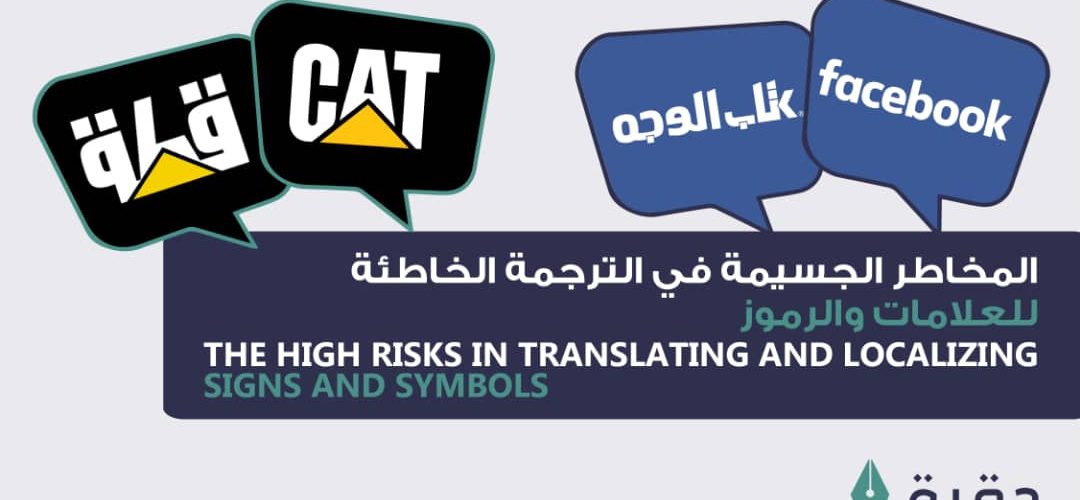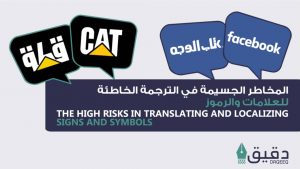Category: Translation Written by: Daqeeq Date: 25 Oct 2021
Daqeeq says….
The high risks in translating and localizing signs and symbols
When businessmen seek to globalize their products and services, they need a localization agency that does the job right. Localization experts are not merely mechanical translators. They are cultural consultants as well. They advise against any part of the campaign that might be perceived as offensive in the local culture.
How many times have we seen in the Arab world public outrage because a symbol or a logo unintentionally represented something sacred, like the name of Allah or any name of revered persons, in an offensive or abusive way?
Starbucks, upon entry in the Saudi market, had to change its logo, and Coca-Cola does not use a nude figure of a woman embracing a coke bottle in the Middle East.
In these situations, conspiracy thinking would have a large audience, which means the demise of the brand in a certain market.
This is not to say that the problem of symbol translation is limited to the conservative Middle East societies. A symbol as simple as the okay sign is an insult in Brazil, and a thumb up is profane in Greece and Australia.
It is the job of the localization experts rendering the marketing campaign into another culture to alert the client to such misunderstandings before the campaign is launched and it is too late for damage control.
However, translators, aware of the cultural differences in general and those associated with symbols and signs in particular, can take the liberty to convert money sums, measurements and others, or use them in parenthesis, to avoid throwing this task on the audience. In money sums, Arabic requires commas to separate between figures, not dots, so translators must follow this rule, and when a not-so-common money sign is used, they can convert to local currency or the US dollar.
In the Arab world, for example, we use the metric system, so translators are supposed to make the job easy for their audiences and do the conversion. Some TV stations set that as a condition for subtitling jobs. So, 5 miles is translated into 8 kilometers and so on, even if the sign appears visually in the displayed material without being expressed verbally.
Another issue related to this topic is the translation of public signs. According to scholar Ma Qiannan in a research paper on the issue, with China as a case study, errors in translating these signs leave a negative impression on the image of the country or the city, attributing these errors partly to cultural differences. His paper proposes “main principles and strategies which public signs’ translation should pay attention to.” In general, the public sign’s wording and translation should maintain simplicity, clarity, concision, appropriateness of tone, and normality so that they would be universal all over the world.








No comments yet.